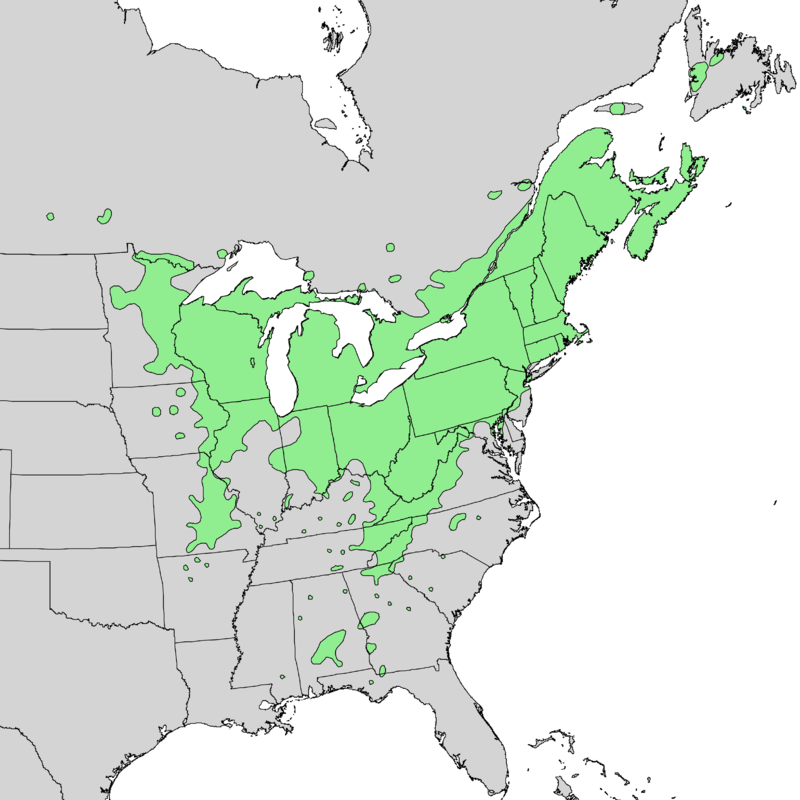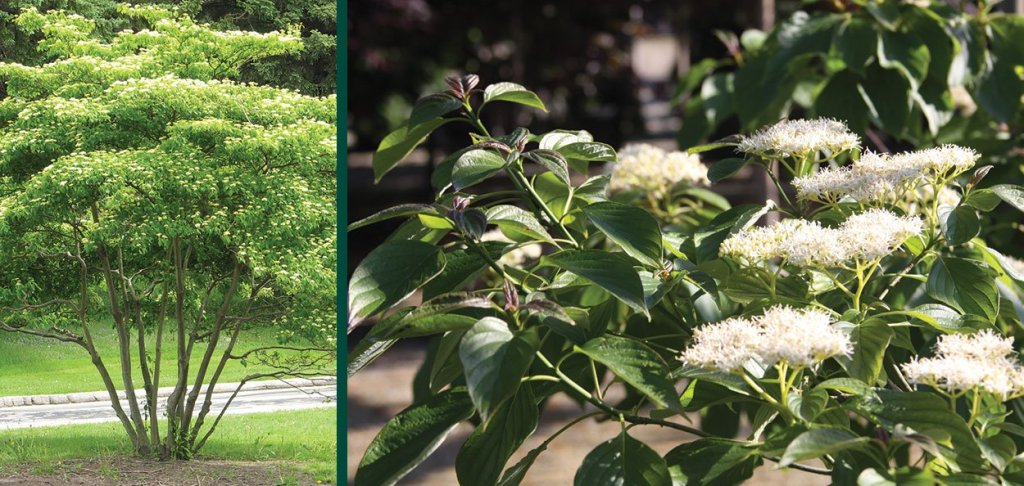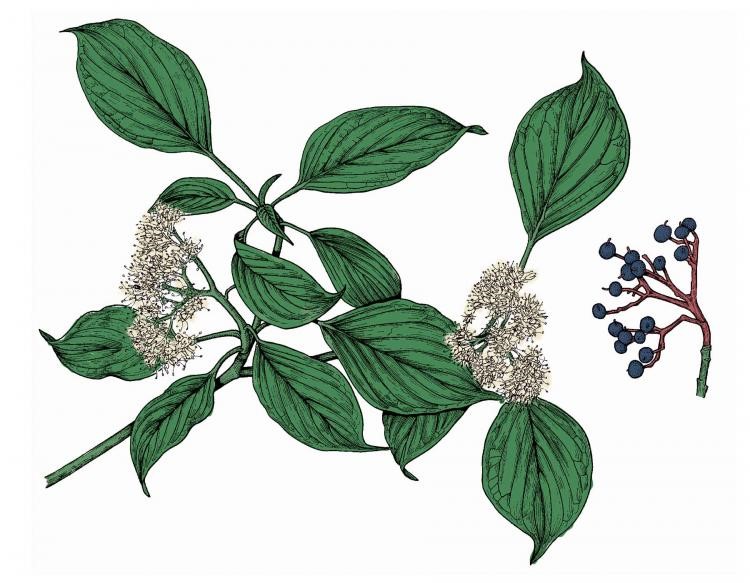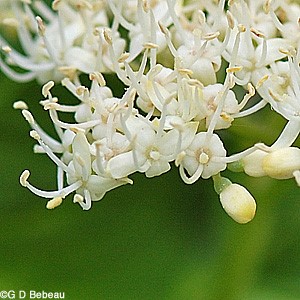Pagoda Dogwood (Cornus alternifolia)
The Pagoda Dogwood is native to most of the northeastern United States and some of the upper Midwest including eastern Minnesota.


The Pagoda Dogwood also known as the Alternate-leaved Dogwood is a small, deciduous tree/shrub meaning it loses its leaves in the fall and grows to about 15-25 feet at maturity. It is a fast-growing tree and grows about 2 feet a year and reaches maturity at about 10 to 15 years. Its lifespan can be anywhere from 50 to 150 years. The bark is dark or light gray or a reddish brown that can have shallow ridges or be smooth. The leaves of this tree are opposite and alternately arranged and cluster at the end of the twigs. The leaves are an egg shape with their thickness being largest in the middle with a tapered base and top and are not toothed.

This species is monoecious, so it contains both male and female flowers on one tree. The flowers emerge in the spring months and are small, white, and arranged in clusters. They have four petals, four stamens that are alternate to the petals and yellow anthers that extends outward (these make up the male portion of the flower that produced pollen). There is one pistil that grows from the flow as well (this is the female portion of the flower that is fertilized). The fruit of this tree is a dark blue berry that grows beginning in late summer. They grow from a stalk that is initially green but turns a reddish brown as it matures. Birds enjoy eating this fruit and can serve as distributors of the seed to new areas.

In terms of significance to native tribes of Minnesota, the Ojibwe tribe referred to this tree as “moso’mîc” or moose tree, and its inner bark was used medically to induce vomiting in a patient.
